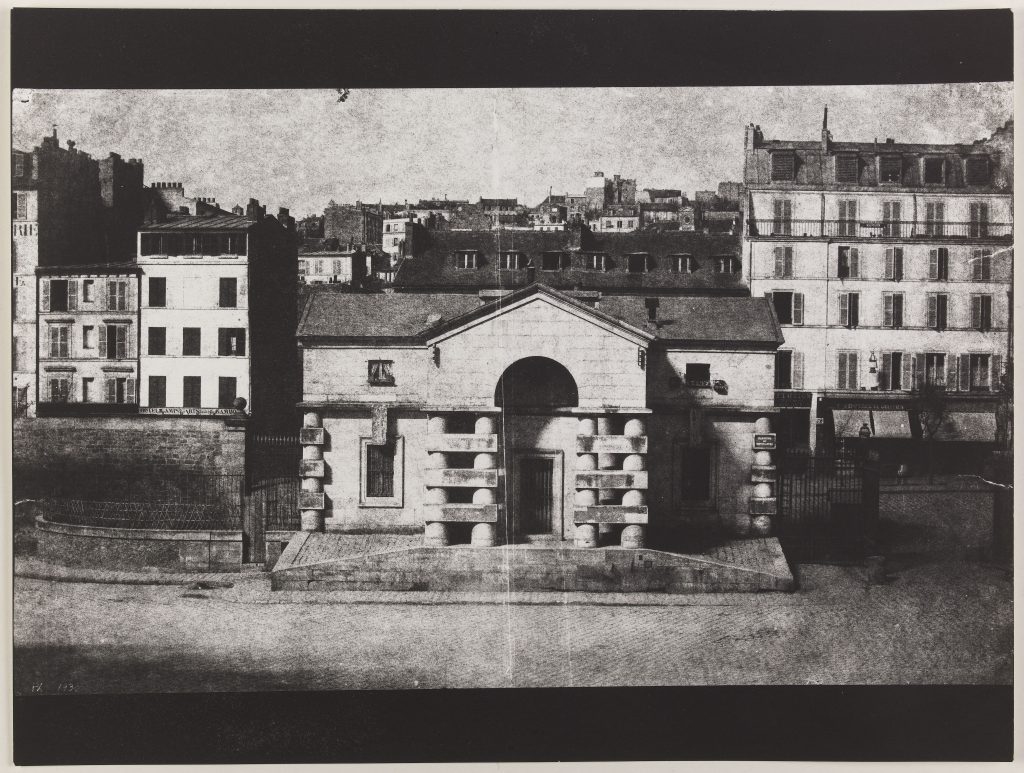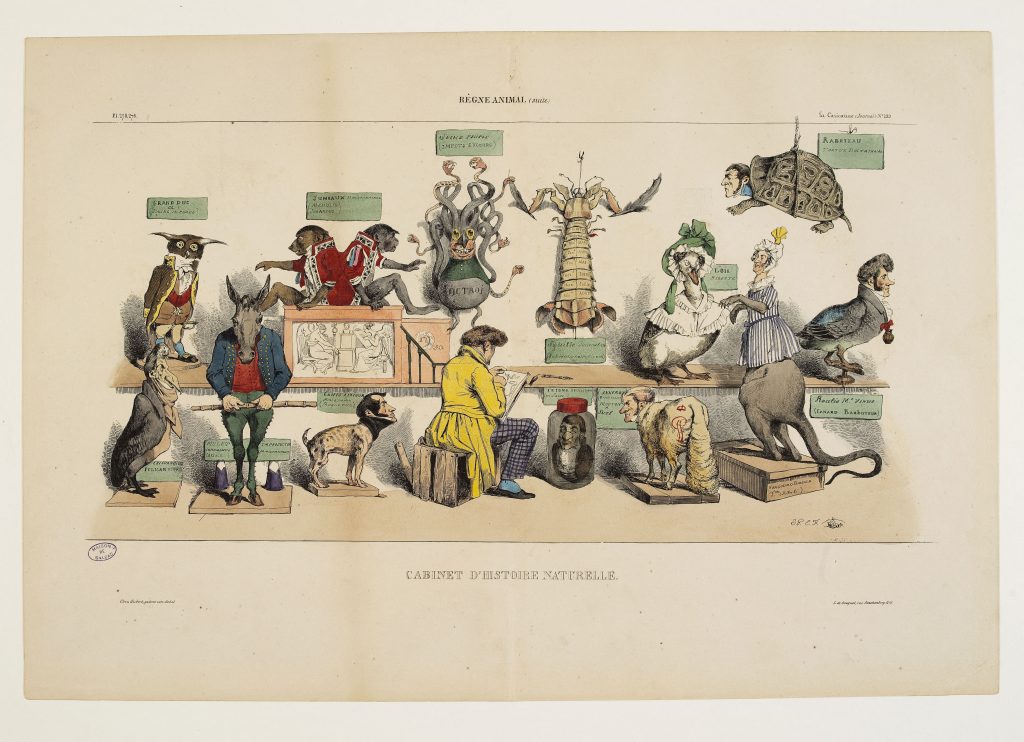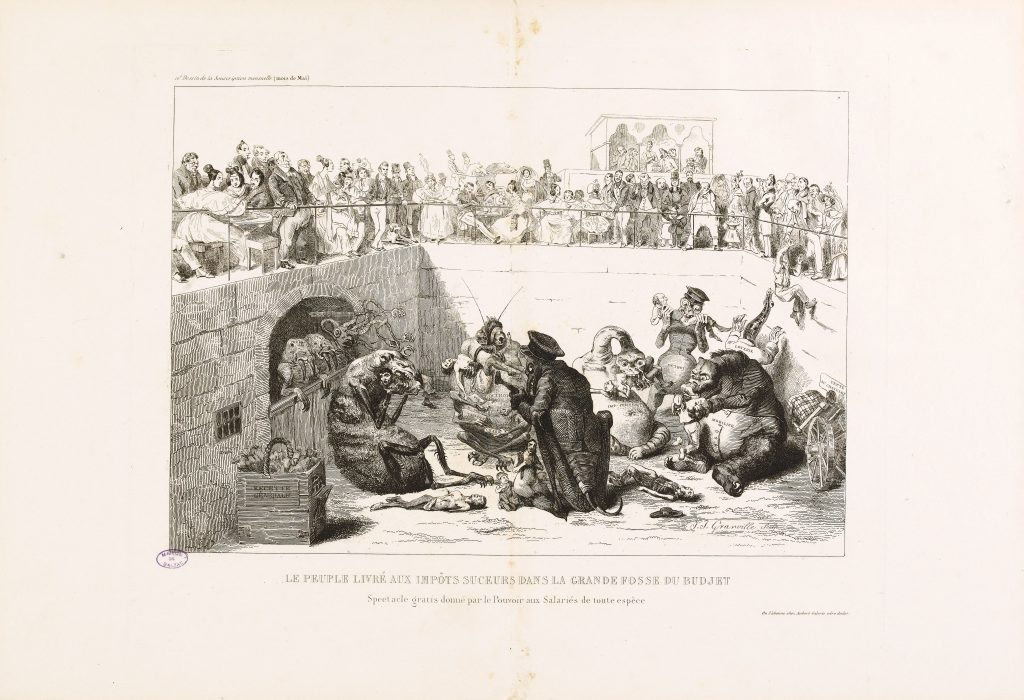
A few years before the French Revolution, a surrounding wall was built around Paris, not to protect the city, but to inspect and tax all goods entering. Known as the wall of the ‘fermiers généraux’ (after the officials who collected this tax), the wall was punctuated with customs buildings (barrières) in a radically new architectural style. The wall was extremely unpopular because it seemed to imprison Parisians and because it was associated with a tax; it nonetheless remained standing until 1860, when it was replaced by the fortifications.
The Octroi, the infamous tax on merchandise, was eliminated only in 1943. Four buildings survive of the customs houses, including the columns of the Barrière du Trône and the Rotonde de La Villette. The Octroi encouraged the proliferation of guinguettes, small eateries surrounding Paris where wine was sold much cheaper because it was not taxed: in fact, everything was less expensive outside the city walls.

‘The octroi is like a leech on Parisians; the only way to escape it is to make a fortune, because the Octroi loves the rich; it does not go after their lackeys or their dogs or their carriages, but throws itself upon the poor, their food, their drink, their straw, the cheap pellets of coal dust that heat them in the winter for lack of wood; everything is its prey, everything pays it a tribute.’
Text published in La Caricature, 13 September 1832


The Octroi was a tax added on to many others, and it was all the more loathed because it applied to basic consumer goods like wine, tobacco, flour and coal. Grandville, an artist fiercely opposed to the regime, did several caricatures of this tax in various fantastical forms.Whether it describing a ‘leeching tax’ or ‘the people squeezer’, the Octroi was always represented as a monster greedily devouring the poor.